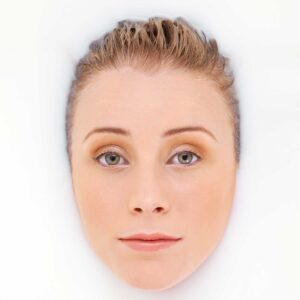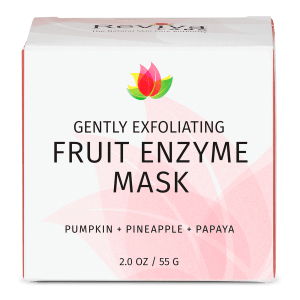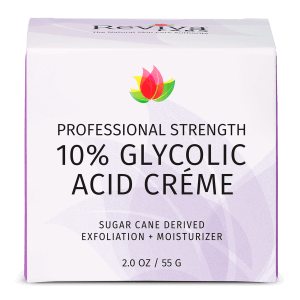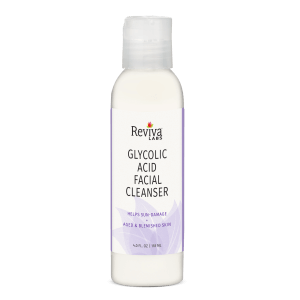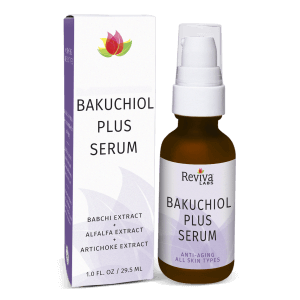Clean Beauty, Natural, Skin Care
Skin-Transforming Secrets from Korean Facialists
Korean skincare, a blend of meticulous technique and innovative products, is highly respected in the beauty world. It offers an in-depth approach to skin health, emphasizing the importance of each step in a skincare routine and the unique role of each product.
Unveiling the Secrets of Korean Skincare
Korean skincare routines have become a global phenomenon, noted for their thoroughness and effectiveness. While these routines are popular worldwide, there’s still a lot to learn about the latest Korean skincare innovations.
1. The Art of Double Cleansing
The concept of double cleansing is integral to Korean skincare routines, and it’s designed to ensure thorough cleansing of the skin by using two different types of cleansers, each with a specific purpose.
- First Step – Oil-Based Cleanser: The initial phase of double cleansing involves an oil-based cleanser. This type of cleanser is particularly effective at dissolving and removing oil-based impurities. These include elements like makeup, SPF, and sebum (the natural oil produced by the skin). Oil-based cleansers work on the principle that like dissolves like, meaning they’re highly efficient at breaking down oily substances that water-based cleansers might struggle with.
- Second Step – Water-Based Cleanser: Following the oil cleanse, a water-based cleansing foam or gel is used. This step is crucial for deeply cleansing the pores. Water-based cleansers remove any residual impurities and dirt that the oil cleanser might have left behind. This includes sweat, dirt, and bacteria. By thoroughly cleaning the pores, this step helps prevent acne and other skin issues.
- Alternative – Oil-in-Micellar Formula: For those with a busy lifestyle or in need of a quicker routine, an oil-in-micellar formula can be a great alternative. This innovative skincare product combines the oil’s ability to dissolve makeup and sebum with the gentle cleansing properties of micellar water. Micellar water contains tiny micelles, or oil molecules, suspended in soft water, which attract dirt and oil. This formula allows for a quick yet effective cleansing process, removing makeup and leaving the skin feeling clean, refreshed, and hydrated without the need for a two-step process.
Double cleansing is a hallmark of Korean skincare because it thoroughly cleanses the skin by addressing both oil-based and water-based impurities. This method ensures that the skin is deeply cleansed, which is essential for maintaining a healthy, clear complexion.
2. Understanding the Purpose of Each Product
Korean skincare is renowned for its layered skincare approach, where each product is formulated to address specific skin concerns and enhance the overall health and appearance of the skin while amplifying the effects of the other products. Let’s delve into the roles and characteristics of different types of products commonly found in Korean skincare routines:
1. Waters: These are the lightest and most fluid products in the Korean skincare regimen. Often referred to as toners or skin tonics, waters are designed to hydrate and nourish the skin immediately after cleansing. They help to replenish moisture that might have been lost during the cleansing process and restore the skin’s pH balance. Waters also create a moist and receptive base for the products that follow, ensuring that subsequent layers of skincare are absorbed more effectively.
2. Refiners: These products focus on improving the texture and clarity of the skin. Refiners might contain ingredients like alpha hydroxy acids (AHAs), beta hydroxy acids (BHAs), or other exfoliating agents that help to gently remove dead skin cells, revealing brighter and smoother skin. They can also include components aimed at reducing the appearance of pores, fine lines, and uneven skin tone. By addressing these skin texture issues, refiners play a crucial role in enhancing the skin’s overall radiance and clarity.
3. Emulsions: Sitting between waters and heavier creams in terms of consistency, emulsions are a key step in the Korean skincare routine. They are typically lighter than creams but more nourishing than waters or refiners. Emulsions are designed to balance the skin’s oil and moisture levels, providing essential hydration without being overly heavy or greasy. This makes them particularly beneficial for combination or oily skin types. By balancing the skin’s moisture, emulsions help to prepare the skin to absorb the more concentrated treatments and moisturizers that follow in the skincare routine.
4. Serums: Serums and essences are specialized blends focused on addressing particular skin issues such as aging, uneven skin tone, or dryness. Typically, they contain a higher concentration of active substances and possess a more substantial texture compared to lighter waters or emulsions.
5. Creams: These skincare products are meticulously formulated to encapsulate and preserve the essential nutrients and moisture absorbed in the preceding stages of your skincare routine. By forming a resilient barrier on the skin’s surface, they play a crucial role in maintaining skin hydration levels. This protective shield is not just effective in preventing the loss of vital moisture but also acts as a defense mechanism against a range of environmental aggressors. These include harmful pollutants and the damaging effects of UV rays, both of which can lead to premature skin aging and other skin concerns. Incorporating these products into your regimen is a proactive step towards ensuring long-lasting skin health and resilience against daily environmental challenges.
Korean skincare emphasizes a layered approach (similar to what Reviva advocates), with each product serving a specific purpose and complementing the others in the regimen. Waters hydrate and nourish the skin post-cleansing, refiners enhance skin texture and clarity, and emulsions balance oil and moisture levels. Together, these products work synergistically to improve the skin’s health and appearance, making the most of each layer’s unique properties and benefits.
3. The Importance of Product Application Order
The order of application in skincare routines, particularly in Korean skincare, is meticulously structured to maximize the benefits of each product. The general principle is to start with the lightest textures and gradually move to the heavier or thicker ones. This sequence allows each product to be absorbed properly, ensuring that the skin receives the full range of benefits from each component. Let’s break down this process in more detail:
- Beginning with Water-Based Products: After cleansing, the first products to be applied are typically the lightest in texture, such as toners, waters, or mists. These products are designed to hydrate and prepare the skin for subsequent products. They replenish moisture lost during cleansing and help to restore the skin’s pH balance.
- Application of Emulsions: Following the water-based products, emulsions are applied. These are slightly thicker in consistency but still lighter than creams or oils. Emulsions help to further balance the skin’s oil and moisture levels, providing hydration without clogging pores. This step is crucial for maintaining the skin’s natural moisture barrier and preparing the skin to absorb the more concentrated treatments that follow.
- Concentrated Treatments – Serums and Essences: These are typically the heart of the skincare routine. Serums and essences are concentrated formulations designed to target specific skin concerns like aging, pigmentation, or dehydration. They are generally richer in active ingredients and have a thicker consistency than waters or emulsions. Applying them at this stage allows the active ingredients to penetrate deeply into the skin, where they can be most effective.
- Sealing with Creams and Oils: The final step involves applying even thicker textures, such as creams and oils. These products are designed to lock in all the nutrients and moisture from the previous steps. They form a protective barrier on the skin’s surface, which helps to prevent moisture loss and protect against environmental stressors like pollution and UV rays. This layer is crucial for ensuring that the skin remains hydrated and nourished throughout the day or night.
The sequence of product application in Korean skincare is essential for achieving the best results. Starting with the lightest products allows for optimal absorption, and gradually layering thicker textures helps to seal in moisture and active ingredients. This process ensures that each layer of skincare works harmoniously with the others, leading to a more effective skincare routine and healthier, more radiant skin.
4. The Emergence of Skincare Supplements
The growing interest in skincare supplements reflects a holistic approach to skin health, recognizing that external treatments are most effective when complemented by internal support. Here’s an expanded look at this trend:
- The Concept of Internal Skincare: Skincare supplements are based on the idea that the health of our skin is closely linked to our overall internal health. Factors like diet, hydration, stress levels, and sleep quality can all significantly impact skin appearance. Supplements aim to support these internal factors, helping to correct imbalances and deficiencies that might be affecting skin health.
- Types of Skincare Supplements: There are various types of supplements, each targeting different aspects of skin health. These can include:
- Vitamins and Antioxidants: Supplements like vitamins A, C, E, and D, as well as antioxidants such as resveratrol and green tea extract, are popular for their skin-protecting and anti-aging properties.
- Omega Fatty Acids: Omega-3 and Omega-6 supplements, often derived from fish oil or flaxseed oil, are known for their anti-inflammatory effects and can help improve skin barrier function.
- Collagen and Amino Acids: These supplements are believed to support skin elasticity and structure. Collagen is a key component of the skin, and supplementing with it can help maintain its youthful appearance.
- Probiotics: Recognized for their role in gut health, probiotics are also linked to improved skin health. They can help balance the gut microbiome, which in turn can positively affect skin conditions like acne, eczema, and rosacea.
- Addressing Specific Skin Concerns: Different supplements can target specific skin concerns. For example, antioxidants can combat oxidative stress and signs of aging, while omega fatty acids might be more beneficial for those with dry or inflamed skin. It’s essential to choose supplements that align with individual skin needs and concerns.
- Complementing Topical Skincare: While supplements can significantly impact skin health, they are most effective when used in conjunction with a suitable topical skincare routine. This dual approach ensures that the skin is being cared for both from the inside and the outside.
- The Importance of a Balanced Diet: It’s important to note that supplements should not replace a healthy and balanced diet. They are intended to supplement the diet, not substitute for it. A diet rich in fruits, vegetables, lean proteins, and healthy fats provides essential nutrients that are beneficial for skin health.
- Consultation with Healthcare Professionals: Before starting any supplement regimen, it’s advisable to consult with a healthcare professional, especially for individuals with pre-existing health conditions or those taking other medications.
Skincare supplements are an increasingly popular way to enhance skin health by addressing internal imbalances and deficiencies. They offer a holistic approach to skincare, complementing external treatments with internal support. However, they should be used thoughtfully and in conjunction with a balanced diet and appropriate topical skincare.
5. The Balanced Approach to Exfoliation
Korean skincare advocates for gentle, customized exfoliation, focusing on maintaining skin balance. Innovations like water-activated enzyme exfoliators underscore this gentle yet effective approach. Let’s delve deeper into the concept of exfoliation within the Korean skincare philosophy, which is renowned for its meticulous and balanced approach:
- Philosophy of Gentle Exfoliation: In Korean skincare, the emphasis is on gentle and careful exfoliation. The goal is not just to remove dead skin cells but to do so in a way that maintains the skin’s natural balance and health. This approach contrasts with more aggressive exfoliation methods, which can sometimes strip the skin of its natural oils and disrupt its protective barrier.
- Customization Based on Skin Needs: A key aspect of Korean exfoliation is the customization of products based on the skin’s daily needs. Understanding that skin condition can vary day-to-day, Korean skincare advocates for adjusting exfoliation routines to match. For instance, if the skin is feeling particularly sensitive or dry, a milder exfoliator or less frequent exfoliation might be advisable.
- Innovations in Exfoliation Products: Korean skincare is at the forefront of cosmetic innovation, and this extends to exfoliating products. One such innovation is water-activated enzyme exfoliators. These products typically come in a powder form containing enzymes that, when mixed with water, become active and gently break down dead skin cells. This type of exfoliation is particularly gentle, making it suitable for even sensitive skin types.
- Enzyme Exfoliators – Gentle and Effective: Enzyme exfoliators work by specifically targeting the keratin protein in dead skin cells. Unlike physical exfoliants that require manual scrubbing, enzyme exfoliators dissolve dead skin cells without the need for abrasive action. This makes them ideal for achieving a smooth, refined skin texture without causing irritation or redness.
- Frequency and Application: With enzyme exfoliators and other Korean exfoliating products, the frequency of use is typically lower compared to some Western exfoliation methods. Many Korean skincare routines suggest using exfoliating products once or twice a week, depending on the skin’s tolerance and the product’s strength. This careful frequency ensures that the skin’s natural balance and integrity are maintained.
- Complementing with Other Skincare Steps: After exfoliation, Korean skincare routines usually involve applying hydrating and nourishing products to soothe and replenish the skin. This might include essences, serums, and moisturizers, which help to restore hydration and aid in skin repair post-exfoliation.
Exfoliation in Korean skincare is characterized by its gentle approach, emphasizing skin balance and health. Innovations like water-activated enzyme exfoliators are a testament to the evolving and adaptive nature of Korean skincare, offering effective yet gentle options for maintaining smooth and healthy skin. The emphasis is always on tailoring the routine to the skin’s current condition, ensuring that exfoliation is a nurturing, not stripping, process.
6. The Benefits of Facial Massage
Facial massage is an integral component of Korean skincare, valued not just for its relaxing properties but also for its considerable benefits to skin health and appearance. Here’s an expanded look at the role and benefits of facial massage in Korean skincare:
- Anti-Aging Benefits: One of the most celebrated advantages of facial massage is its anti-aging effect. Regular facial massage can help in reducing the appearance of fine lines and wrinkles. The gentle manipulation of the skin during a massage can stimulate collagen production, which is crucial for maintaining skin elasticity and firmness. Collagen is a key protein that helps keep the skin looking youthful, and boosting its production can lead to a more vibrant and youthful complexion.
- Stimulating Circulation: Facial massage aids in enhancing blood circulation to the face. Improved circulation means that more oxygen and nutrients are carried to the skin cells, which can help in the rejuvenation and healing of the skin. Better blood flow also contributes to a healthier, more radiant complexion, often giving the skin a natural glow following a massage.
- Strengthening Skin Capillaries: By gently stimulating the skin, facial massage can strengthen the capillaries under the skin. Stronger capillaries mean improved resilience and a reduction in the likelihood of skin damage, such as redness or capillary breakage. This aspect is particularly beneficial for those with sensitive or reactive skin.
- Detoxifying the Skin: Facial massages encourage lymphatic drainage, which is the process of eliminating toxins from the lymphatic system. This detoxification is crucial for maintaining healthy skin, as it helps to reduce puffiness, under-eye bags, and even acne. The lymphatic system plays a key role in our immune system, and aiding its function through massage can have positive effects on skin clarity and health.
- Professional Techniques for Contouring: Professional facial massage techniques often incorporate specific movements designed to contour the face. These techniques can temporarily reduce the appearance of puffiness, define jawlines, and lift the facial contours. While the effects are not permanent, regular professional massages can provide subtle enhancements to the facial structure.
- Self-Massage Techniques: In addition to professional treatments, many Korean skincare routines include self-massage techniques that can be performed at home. These routines typically involve gentle upward strokes and tapping motions to stimulate the skin and muscles. Incorporating facial massage into a daily skincare routine can be a simple yet effective way to maintain skin health and vitality.
Facial massage is a multifaceted practice in Korean skincare that goes beyond mere relaxation. Its benefits include anti-aging effects, improved circulation, strengthened skin capillaries, detoxification, and even facial contouring. Both professional techniques and at-home practices contribute to overall skin wellness, reflecting the holistic approach of Korean skincare in treating and nurturing the skin from both inside and out.
7. Trends in Skincare Tools
The evolution of Korean skincare trends highlights the industry’s commitment to innovation and effectiveness. LED face masks are a prime example of this, representing a significant shift in skincare technology and methodology. Let’s explore this trend in more detail:
- LED Face Masks – The Forefront of Skincare Technology: LED (Light Emitting Diode) face masks are a relatively recent innovation in skincare. They utilize different wavelengths of light to penetrate the skin and provide various therapeutic benefits. Unlike traditional skincare tools like jade rollers, which primarily offer physical massage and lymphatic drainage, LED masks harness the power of light therapy for a range of skin improvements.
- Improvement in Skin Tone: One of the primary benefits of LED masks is their ability to improve skin tone. Specific wavelengths of light can help even out skin pigmentation, reduce redness, and improve overall complexion. For instance, red light is known for its ability to stimulate circulation, which can lead to a more even skin tone and a healthy glow.
- Stimulating Collagen Production: Collagen is crucial for maintaining skin elasticity and preventing wrinkles. LED face masks often use red and near-infrared light to penetrate deeper layers of the skin, stimulating collagen production. This can lead to a reduction in fine lines and wrinkles, and an overall more youthful appearance.
- Targeting Acne-Causing Bacteria: For those with acne-prone skin, LED masks can be particularly beneficial. Blue light therapy, for example, is known for its antibacterial properties. It targets the bacteria that cause acne, leading to a reduction in breakouts and improvements in skin clarity. Additionally, it can help in regulating oil production, which is often a contributing factor in acne.
- Versatility and Customization: Modern LED masks offer a range of settings, allowing users to tailor their treatments to their specific skin needs. Some masks offer multiple light settings (such as red, blue, and green light), each addressing different skin concerns. This versatility makes LED masks a valuable tool for a wide range of skin types and conditions.
- Complementing Traditional Skincare Routines: While LED masks mark a shift from more traditional tools, they are often used in conjunction with these methods. For example, using a jade roller for lymphatic drainage and then applying an LED mask for light therapy can provide a comprehensive skincare experience, combining the benefits of both traditional and modern techniques.
- Ease of Use and Home Treatments: One of the appeals of LED face masks is their ease of use, making advanced skincare treatments accessible at home. This convenience allows individuals to incorporate advanced light therapy into their regular skincare routines without the need for frequent spa or clinic visits.
LED face masks are a testament to the continuous evolution of Korean skincare, integrating advanced technology to address various skin concerns effectively. From improving skin tone and stimulating collagen production to targeting acne-causing bacteria, these masks offer a versatile and convenient solution for enhancing skin health, marking a significant development from traditional skincare tools.
8. Skincare as a Reflection of Overall Health
The Korean approach to skincare is deeply rooted in a holistic philosophy that views skin health as an integral part of overall well-being. This perspective extends far beyond the boundaries of aesthetic appearance, intertwining skincare with aspects of lifestyle, diet, and mental health. Let’s expand on this further:
- Skincare as a Reflection of Overall Health: In Korean culture, the condition of one’s skin is often seen as a reflection of their overall health. This belief stems from the understanding that various internal factors, such as stress, diet, and lifestyle, directly impact skin health. Therefore, a clear and healthy complexion is often viewed as an indicator of a well-balanced life.
- Balanced Lifestyle and Diet: A key component of the Korean skincare philosophy is the emphasis on a balanced lifestyle and diet. The belief is that what you put into your body is just as important as what you put on your skin. Traditional Korean diets, rich in vegetables, fermented foods, and lean proteins, are thought to contribute positively to skin health. Additionally, practices like adequate hydration, regular exercise, and sufficient sleep are all considered essential for maintaining a healthy complexion.
- Holistic Skincare Practices: Korean skincare routines often incorporate practices that go beyond just topical treatments. These might include facial massages to improve circulation, relaxation techniques to reduce stress (which can directly impact skin health), and even meditation or mindfulness practices. This holistic approach is aimed at nurturing not just the skin, but the mind and body as well.
- Preventive Care Over Quick Fixes: Unlike many Western skincare approaches that focus on treating existing problems, the Korean philosophy often emphasizes preventive care. This involves a consistent skincare routine that nurtures and protects the skin, preventing issues before they arise. The emphasis is on long-term skin health rather than short-term cosmetic fixes.
- Emphasis on Gentle Care: Korean skincare is known for its gentle approach. Products are often formulated to be kind to the skin, avoiding harsh chemicals and irritants. This gentleness is a reflection of the broader philosophy that taking care of the skin should not be at the expense of its long-term health.
- Cultural Appreciation for Skincare: In Korean culture, skincare is often seen as a form of self-care and is highly valued. It’s not uncommon for both men and women to invest a significant amount of time in their skincare routines. This cultural appreciation underscores the belief that taking care of one’s skin is an important aspect of taking care of one’s overall health.
The Korean skincare philosophy embraces a thorough and holistic approach, deeply rooted in the broader perspective of health and wellness. It transcends the boundaries of mere cosmetic enhancement, placing a strong emphasis on achieving a harmonious balance in lifestyle, emphasizing preventive care, and advocating for gentle, nurturing treatments. This ethos positions skincare as an integral component of one’s overall health, a concept that often differs from many Western methodologies, which tend to give precedence to quick, visible results. In Korean culture, the practice of skincare is seen as a natural extension of one’s health, interwoven with aspects of a balanced diet and lifestyle. This holistic view stands in stark contrast to the predominantly aesthetics-driven approach prevalent in Western skincare ideologies.





